The content of the article
The beneficial properties of barberry were well known in the ancient world on different continents and in different parts of the world. The ancient Greeks and Romans from the fruits and leaves of barberry prepared potions for diseases of the stomach and intestines. In India - it was a popular tonic, quenching thirst and laxative. In ancient Egypt, the fruits of barberry cleansed the blood and body of toxins. In the Far East, Japan and China, they were treated for scurvy, saved from vitamin deficiency, relieved fever attacks, and lowered high blood pressure. In Tibetan medicine, the barberry flower is popular, anti-aging tinctures were made from the plant.
Plant species
Can I use the fruits of barbaris vulgaris? Barberry is a vast, large genus of shrubs and trees, which has about 580 species. This includes the evergreen spiny species, and deciduous. What types of shrubs are most often used as medicinal raw materials, and which ones are cultivated for decorative purposes?

- Barberry ordinary. This is the most unpretentious type of plant, a grass that perfectly survives in the Central Russian strip. "Favorite" of gardeners and gardeners. It is often used as an ornamental plant that pleases the eye with appearance for three seasons - spring, summer and autumn. The bush looks beautiful in the fall, when bright clusters of berries ripen and the foliage turns red.
- Barberry Asian. This is the general commercial name of several botanical species of shrubs that are found in Kazakhstan, Uzbekistan, Turkmenistan, Tajikistan, and Kyrgyzstan. These varieties are frost-resistant, their fruits are much darker, covered with a bluish coating. These, for example, include: oblong barberry, spherical, Turkmen, whole-edge. The average height of Asian varieties is 2 m. Some of them are used in folk medicine, the food industry, some only for decoration.
- Amur barberry. It grows in the Primorsky Territory, it is also known in China, Japan. Outwardly resembles an ordinary barberry, but with longer and larger fruits, leaves and thorns. The crown of the bush is beautiful, wide, sprawling, can grow up to 3 m. It belongs to heat-resistant, dry-resistant and frost-resistant species. It is found in the wild, but also cultivated since 1875.
- Ottawa barberry. This is a hybrid obtained by crossing barberry ordinary and Thunberg variety. One of the most famous decorative species of shrubs, which is widely used for landscaping. Beautiful spreading crown, purple-violet foliage, fragrant flowers are the virtues for which this species is worth growing. This is a real decoration of city parks and gardens. The fruits of this species are edible, but small in size and very acidic.
- Barberry of Thunberg. In the wild, this species can be found in the highlands in Japan and China.Cultivated throughout Europe for landscape design. This is a small shrub with a height of not more than 1 m, with small, graceful leaves and plentiful fruits. Berries of this variety taste bitter due to the large amount of alkaloids in the composition, so they are not eaten. However, birds enjoy these vitamins with pleasure in the winter.
Features of barberry ordinary
What is barberry? People far from the horticultural sphere can clearly see the type of fruits of this plant. At least according to the image on the wrapper of the famous Barberry caramels or berries in seasoning for pilaf. However, not everyone knows what the shrub itself looks like, what are the beneficial properties of barberry and what diseases they treat?
Habitat
Barberry ordinary can be found in Asia. But this species is most characteristic for Central and Southern Europe. Distributed throughout the European part of Russia, it can also be found in the Volga region, Crimea, in the North Caucasus. In the wild, the bush loves open, well-lit terrain - the slopes of the mountains, hillocks, hills, forest edges, open river banks, light forests.
Botanical Description
The common barberry plant is a branched shrub reaching a height of 3 meters or more. The bark of young shoots and the trunk is gray, covered with thorns up to 2 cm long. The leaves are alternate, petiolate, finely serrated along the edge, in the summer bright green, in the fall purple-red, brown. Inflorescences are racemose (6 cm), flowers are yellow, with a pleasant honey aroma. The fruits are bright red in color, up to 1 cm long, very acidic. The plant blooms in late spring and early summer, and the fruits ripen in late summer and early autumn, depending on climatic conditions.

Harvesting raw materials
The shrub is famous for the widespread use of not only fruits, but also prepared roots, leaves, and even bark.
- Berries Harvested in September and October (it is better to harvest in dry weather). They are consumed fresh, but also dried in air or in special electric dryers, in which the temperature should not be higher than 40 ° C. Store in linen bags for 3 years. Some herbalists indicate that it is better not to eat or harvest green barberry: because of the high content of alkaloids, berries can be poisoned.
- Leaves. Harvested in the spring - in May-June during the budding period. Leaves are dried in well-ventilated rooms (it is possible in the open air, but not in direct sunlight). Dried raw materials are stored in linen bags for no more than 3 years, they are protected from moisture.
- Bark. Better to do the harvesting in October. The bark is removed from thick stems, strung on a thin rope (thread) and dried outdoors in dry weather or in a closed, but well-ventilated room. Bark, like other types of raw materials, can be stored for 3 years.
- The roots. They often dig it in the fall (October-November), but you can also dig it in the spring. They are well cleaned, washed, dried. Then they are cut into small plates, laid out in a thin layer and dried in a well-ventilated area. Dry roots can be stored for 3 years, protecting from moisture.
Although the medicinal properties of barberry are preserved for 3 years, if possible, herbalists still recommend updating the stock every 2 years with a good harvest.
Composition and pharmacological action
What are the beneficial properties of berries of barberry, its leaves, roots and bark? What has earned this plant such national fame and recognition in traditional medicine?
- Chemical composition. The main value of barberry is alkaloids (substances containing nitrogen). There are eleven of them in barberry. The most important of them are berberine, berbamine, leontin, oxyxanthine. In ripe berries there are a lot of sugars, mineral salts, organic acids, vitamins, and in the leaves there are more vitamin C, essential oils, carotene, malic and citric acids.
- Pharmachologic effect. Cholagogue, hemostatic, anti-inflammatory, diaphoretic, tonic, sedative, astringent, antiseptic, diuretic, hypotensive, antipyretic, antitumor, analgesic.
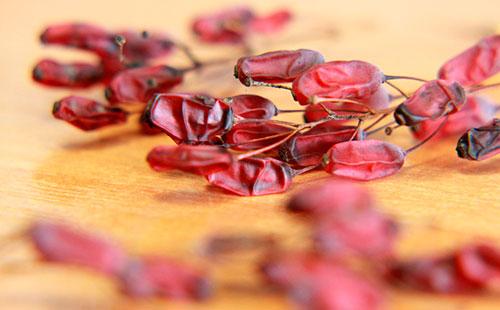
Indications
First of all, thanks to berberine, all parts of the plant are widely used as a choleretic agent. What diseases and symptoms are most commonly used for this plant?
- Violations of the digestive tract. Tinctures and broths stop gastrointestinal bleeding, treat liver diseases (including hepatitis and cirrhosis), spleen, bile ducts, gall bladder, gastric ulcer, digestive upset, hemorrhoids, dysentery.
- Inflammation of the lower respiratory tract. The benefits of barberry have been proven in the treatment of pneumonia, bronchitis, any cough caused by inflammation of the mucous membranes of the respiratory tract. It is also used in the treatment of pleurisy and tuberculosis.
- Diseases of the cardiovascular system. A medicinal plant lowers blood pressure and improves heart function.
- Bladder and kidney disease. Barberry is a good diuretic, so it can be used for urolithiasis (under the strict supervision of a doctor!).
- To improve appetite. Nutritionists recommend taking juice and jelly from the fruits of barberry in case of a loss of appetite before each meal. To reduce acid, you can add a little sugar to it, dilute it with water, add the juice of other fruits.
- Treatment of the oral mucosa and throat. Barberry infusions recommend gargling, rinsing the mouth with gum disease. Thanks to the bactericidal, antiseptic properties, barberry relieves inflammation of the mucosa well.
- For weight loss. How does barberry contribute to weight loss? Firstly, it normalizes metabolic processes in the body and improves digestion. Secondly, thanks to pectins and organic acids, it improves intestinal motility and cleanses it well. Berries also cleanse the blood and the whole body of toxins. During the diet, barberry-based preparations support the body with the necessary vitamins and mineral components, which is also very important. However, when losing weight, it is not recommended to use barberry as a snack and seasoning, since the berry increases appetite. But you can cook compotes, decoctions, teas, infusions with a minimum sugar content.
- For rejuvenation. The anti-aging properties of barberry were known in ancient Tibet and China. Masks were made from it to smooth wrinkles and improve skin color.
- Diseases of the muscles and joints. With arthritis, rheumatism, radiculitis, osteochondrosis, barberry is used internally and externally in the form of compresses. This is not only an anti-inflammatory, but also an analgesic.
- Diabetes. Barberry restores metabolism and improves the condition of diabetes.
- Gynecology. Decoctions and infusions treat uterine bleeding, as well as leucorrhoea, inflammation of the female genital organs with the help of baths and douching. Uterine bleeding is a serious symptom that requires immediate medical attention and an establishment of the cause of the bleeding. Barberry quickly constricts the blood vessels of the uterus, so earlier its decoctions and infusions in folk medicine were used to stop bleeding after childbirth, with uterine bleeding during menopause with hormonal disruptions.
- Help with addictions. In some herbalists, there is information that the fruits and leaves of the bush help to get rid of drug, alcohol, nicotine addiction.
- Outdoor application. With inflammation of the eyes and skin (wounds, eczema), lotions, baths, and rinsing with barberry broth can be made.
- Anti-radiation agent. With active radiation, barberry helps increase the body's defenses.
- Immunostimulating agent. Due to the large amount of vitamin C (especially in the leaves), barberry can be taken prophylactically to strengthen immunity, in the spring period of vitamin deficiency.
Some countries have their own characteristics of the use of this plant. For example, in Germany they treat not only the digestive tract, but also lung diseases, mucosal lesions. In France, it is an antipyretic, bactericidal and hypotensive (lowering blood pressure) drug. In Bulgaria, it is a popular cure for radiculitis and rheumatic pains, in Poland it is often taken for vitamin deficiency, and in China for cancer.
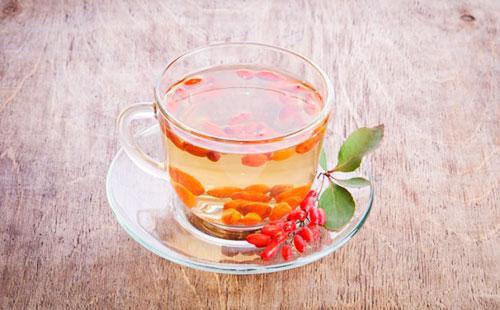
Contraindications
What are the contraindications?
- Pregnancy. Alkaloid substances contained in barberry can increase muscle tone, which is dangerous for a miscarriage in the early term and premature birth in the last trimester. Most sources also prohibit the use of barberry during lactation.
- Individual intolerance. With hypersensitivity and a pronounced allergic reaction, barberry should not be used for medicinal purposes.
- Gallstone disease and cirrhosis. Barberry can trigger an acute attack. Therefore, you can not use the medicine for cirrhosis and hepatitis of various types without prescribing and consulting a doctor.
- Diseases associated with increased blood coagulation. Barberry, with a hemostatic effect, can aggravate the disease.
- Children under 12 years old. The use for medicinal purposes is prohibited or carried out under the strict supervision of a physician. This is due to alkaloids, which can not only benefit, but also harm the body.
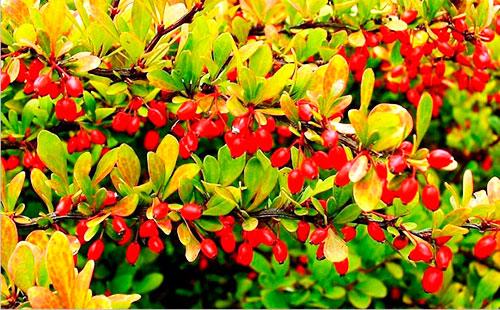
Features of application in traditional medicine and the pharmacological industry
How to cook and use barberry at home? And what drugs based on this medicinal raw material can be purchased at the pharmacy?
How are the fruits used?
The use of barberry fruits is the most diverse:
- they are used in fresh, dried, boiled, pickled form;
- berries make medicinal infusions and decoctions, as well as compotes, juices, syrups, preserves, liquors, marmalades, jams;
- A recipe for making barberry on honey is known (barberry berries are put in liquid fresh honey), then it is used as a healthy treat;
- fruits are also used as a seasoning for pilaf and other meat dishes;
- fresh berries are more often taken for diseases of the heart, kidneys, gastrointestinal tract, vitamin deficiencies, to lower blood pressure, with cough.
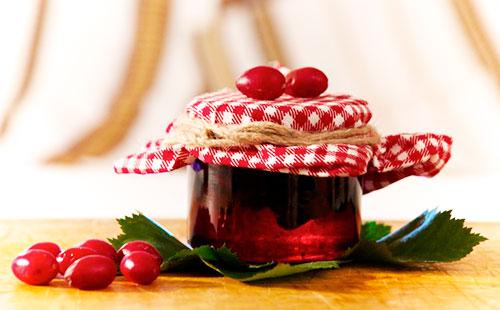
Making barberry jam
- Prepare 1 kg of fresh fruits and fill them with cold water for 8 hours.
- Cook syrup from 6 glasses of sugar and 2 glasses of water.
- Drain the berries, pour the syrup.
- Simmer for 30 minutes.
- Pour jam into sterilized jars and roll the lids.
This is one of the oldest Russian recipes for barberry jam. This is not only a treat, but also an effective antipyretic for colds, flu, SARS.
Making a restorative drink with fresh berries
- Squeeze ½ cup juice from fresh fruit.
- Dilute with a glass of boiled water.
- Take по cup of drink before meals.
This remedy normalizes appetite, and also strengthens the immune system. The beneficial properties of barberry berries are preserved until the first frost, so the fruits can be removed even in October-November.

How to apply leaves
The leaves of barberry are no less valuable than the berries, roots and bark of the plant. Where and how are they used?
- In cooking. Only young leaves are used, which can be collected in spring and early summer. Cabbage soup was cooked from leaves in the old days, added to salads as a seasoning, and marinades were made. You can also use dried leaves as a seasoning, to give a more acidic taste to the first dishes.
- Decoctions, infusions, tinctures for internal use. There may be water infusions and alcohol tinctures. For their preparation, fresh and dry leaves are taken. They are used to treat the digestive tract, kidneys, uterine bleeding.
- As an antiseptic and analgesic for external use. To strengthen the gums, it is recommended to chew fresh leaves of barberry. A decoction of leaves can gargle, it is used for douching with gynecological inflammation, lotions and baths are made from it for diseases of the skin and joints.
Preparation of alcohol tincture of barberry
- Take 2 tbsp. l shredded dry leaves.
- Pour ½ cup vodka or diluted alcohol (40%).
- Insist 14 days in a warm and dark place.
The tincture will have a dark yellow color, a pleasant aroma and a sour taste. Take 20-30 drops three times a day for 3 weeks.
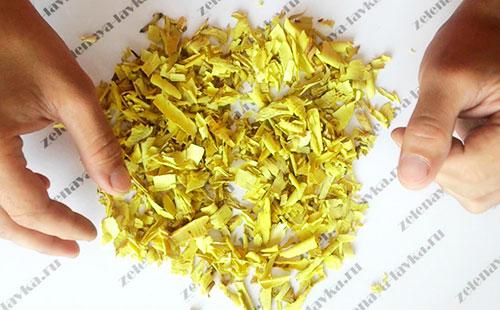
How to apply root and bark
The use of the root and bark of barberry is advisable in inflammatory processes of the oral mucosa, with gynecological inflammation, digestive disorders, as well as for external use - lotions and baths.
Making a decoction of barberry roots
- Take 1 tsp. shredded roots.
- Pour a glass of water.
- Boil and hold in a water bath for 40 minutes.
- Strain the broth.
Take three times a day for 1 tsp. Broth with pneumonia, bronchitis, pleurisy is especially useful. Also, this remedy quenches thirst well.
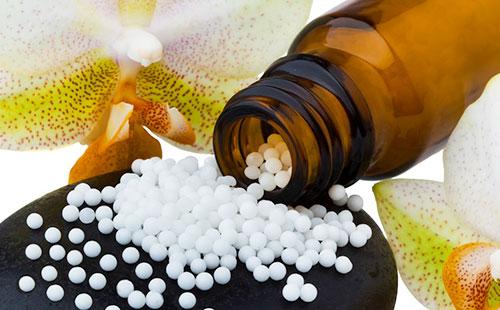
Pharmacy preparations
- Berberine tablets. The active substance of the drug is the barberry alkaloid (berberine). This is a well-known choleretic and antispasmodic, which is used to treat chronic diseases of the gallbladder and liver. Under the influence of berberine, bile secretion increases, its viscosity decreases, bile secretion also increases, and the muscle tone of the gall bladder decreases.
- Pharmacy fee. Dried fruits, leaves, bark and root can be purchased at the pharmacy. Also, barberry can be part of other pharmacy fees.
- Alcohol tincture of leaves. It constricts blood vessels, accelerates blood coagulation, and reduces the smooth muscles of the uterus in the postpartum period. Also used as a choleretic agent. Take about 30 drops three times a day for 3 weeks according to strict indications.
- Homeopathic granules "Barberry comp." They are most often prescribed for chronic tonsillitis and adenoids. In homeopathy, tincture of dried roots is also used, taken for a long time in diluted form with cholecystitis, hemorrhoids, biliary colic, bleeding, rheumatism and other diseases.
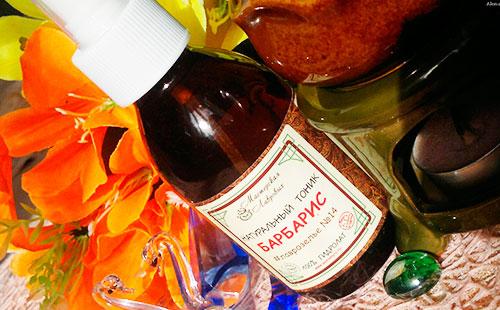
Cosmetology
From leaves, fruits and bark, decoctions and water infusions are prepared, which wipe the face. These homemade lotions and tonics have a rejuvenating effect, eliminate skin defects (age spots, freckles, blackheads), smooth small wrinkles, give a healthy complexion to the face. However, when preparing face masks from fresh fruits of barberry, you need to remember safety: acid can greatly irritate sensitive skin. It is recommended to make masks on a small area of the skin to check the reaction. Also, decoctions and infusions of barberry are effective in general hair care and well eliminate dandruff.
Preparation of a decoction for skin rejuvenation
- Take 1 tbsp. l crushed leaves of barberry (fresh or dry).
- Pour a glass of boiling water.
- Insist 30 minutes.
- Strain.
The broth is used in the morning and evening as a tonic. You can also freeze the decoction in the form of portioned cubes and wipe the face with them.
Cooking hair masks
- Take ½ cup barberry.
- Pour 1 liter of boiling water.
- Insist 1 hour.
This infusion recommend rinsing the hair after washing for 1-2 months.
The healing properties of barberry are known not only in traditional medicine. Barberry-based preparations are actively used in traditional medicine and pharmacology. Its main pharmacological properties are choleretic, anti-inflammatory, antiseptic, hemostatic. Due to the high content of alkaloids, the shrub is a weak poisonous plant, dangerous in case of an overdose and prolonged, uncontrolled intake.

